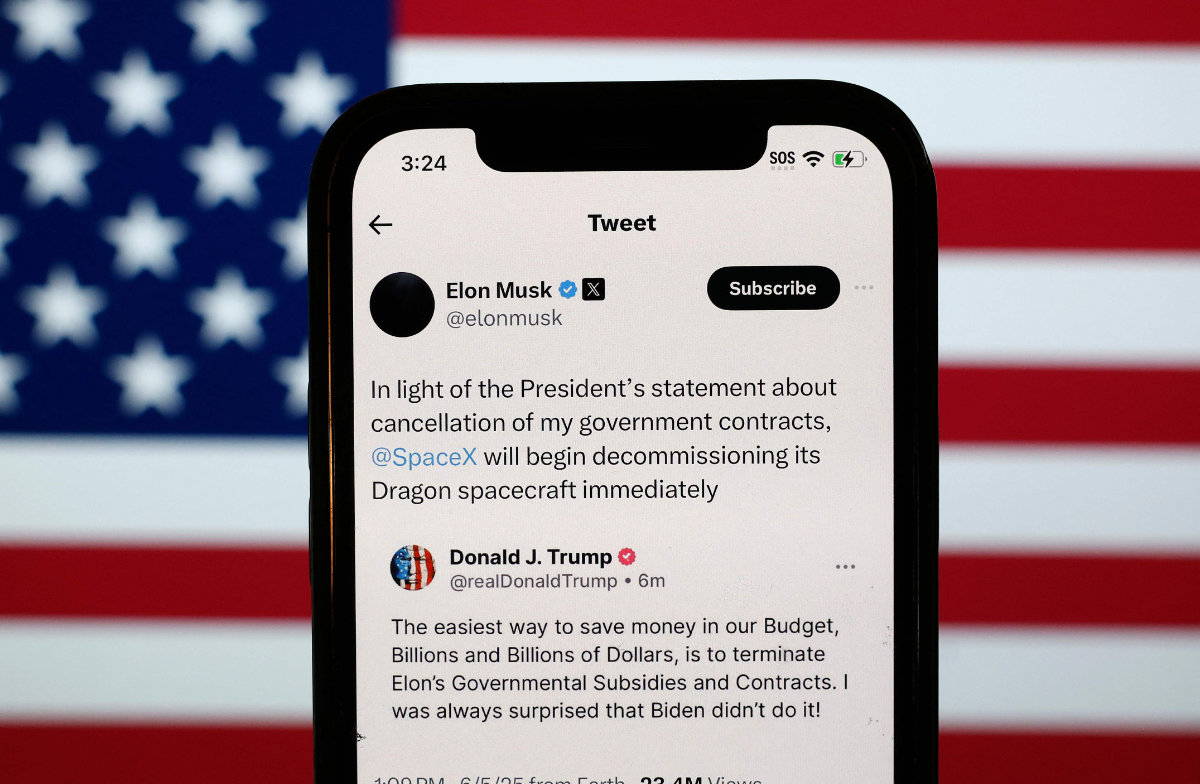The honeymoon between Elon Musk and U.S. President Donald Trump ended with a war of words on social media. In his six months in the White House, Musk came to see big differences between his own political philosophy and that of die-hard Trump fans.

Three underlying conflicts make it difficult for America’s accelerationist elites and MAGA loyalists to blend with each other — conflicts that will have a serious impact on the future governance prospects of the Trump administration.
After a war of words on social media, the honeymoon between Elon Musk and U.S. President Donald Trump came to an end. Although Musk backed down, their relationship is unlikely to return to what it once was. In his six months in the White House, Musk came to realize the huge difference between his own political philosophy and that of die-hard Trump fans. The wealthy elites who have sought to destabilize existing political systems with a view toward controlling a new order are now disillusioned with MAGA. This shows up in three underlying points of discord, laid bare by the Republicans’ so-called Big Beautiful Bill on government spending.
Politically, Musk and other accelerationists support a more thorough, retro “small government” philosophy. They call for significantly reduced spending, deregulation in most emerging fields, controlled military outlays and less intervention overseas. These motivated Musk to lead DOGE — the unofficial Department of Government Efficiency backed by Trump. Although the MAGA movement also calls for a “small government,” they are actually more extremely right-wing than their predecessor, the Tea Party, and support moderate expansion of government power for “course correction.” For example, MAGA people tend to increase military and border security spending for American pride. They also strongly oppose high-skilled immigration as they prioritize racial purity over the technological development needs of the U.S.
Economically, the tech elites advocate market determinism, seeking to eliminate or reduce internal and external factors that distort the free market. This group emphasizes disruptive innovation and free markets to drive economic development. It opposes excessive government spending and protectionist policies and worries about the harm to economic health brought by high debt burdens. MAGA people, on the other hand, lack a systematic economic view. They mainly demand trade and technological protectionism, increased incomes for the white industrial class, antitrust measures and discrimination against foreign capital. Many of these imply regulation of the markets, capital and innovation, which is just the opposite of what the accelerationists want. Trump’s tariff war and the Big Beautiful Bill, which will push American debt to unsustainable highs, have again exposed this ideological divergence.
Socially, the accelerationist elites are more diverse, with most holding values far from mainstream American tradition. This group includes many members of the LGBT community and people with diverse religious beliefs. Musk’s secret big family, for example, is an apparent divergence from traditional American family values.
The MAGA people are more conservative. They follow mainstream American religious faiths such as Christianity and Catholicism and are skeptical of technological innovations that disrupt traditional lifestyles. The Take It Down Act championed by Trump and MAGA exemplifies these differences. The bill requires U.S. internet platforms to crack down on deep-fake pornography and address online violence and extortion. In contrast, Musk, after taking over the X platform, has adopted looser content moderation policies toward pornography, which is viewed by the MAGA force as moral decay.
With such conflicts, it’s hard for the tech elites and MAGA people to blend with each other, which will have multiple impacts on the Trump administration’s future governance prospects.
First, the MAGA force has further consolidated its position and is more heavily relied upon by Trump. Earlier in this term, the cash-providing tech elites and the vote-supplying MAGA faction were Trump’s two most influential support bases. Now, with Musk returning to friendly neutrality, the MAGA group has gained influence in the White House. On contentious policies such as the tariff war and the Big Beautiful Bill, MAGA’s overwhelming support has consolidated Trump’s ruling position and proved themselves to be unconditional backers. This may push Trump toward more populism in decision-making and toward unexpected extreme policy positions.
Second, Trump’s coalition will divide and reorganize itself. His camp comprises multiple right-wing forces bound together by personal loyalty to the president himself. The Musk-Trump war on social media shattered cohesion within the coalition, revealing potential outcomes for groups outside the MAGA movement. Some will reconsider their stance if their political visions clash with Trump’s moves. The MAGA faction, which is likely more aggressive, may force Wall Street elites, neoconservatives and Democratic defectors within Trump’s camp to huddle and share the cold with propositions that counterbalance MAGA as they cautiously manage their relationships with Trump.
Finally, the accelerationists will identify new political pathways to greater power. Before the 2024 election, this group garnered little attention in U.S. politics. Its sudden prominence seems to reflect a commensurate structural shift in American society. Parting ways with the Trump administration does not mean the group is fading from the political stage. Instead, its members will refine their political ideas based on this initial experience in the government and seek new allies. In future election cycles — in 2026 and 2028 — they will reappear but likely will support profoundly different politicians.
